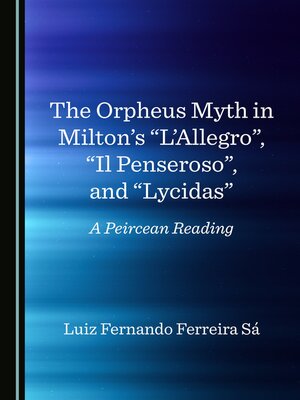The Orpheus Myth in Milton's “L'Allegro”, “Il Penseroso”, and “Lycidas”
ebook ∣ A Peircean Reading
By Luiz Fernando Ferreira Sá

Sign up to save your library
With an OverDrive account, you can save your favorite libraries for at-a-glance information about availability. Find out more about OverDrive accounts.
Find this title in Libby, the library reading app by OverDrive.



Search for a digital library with this title
Title found at these libraries:
| Library Name | Distance |
|---|---|
| Loading... |
In this study of John Milton's "L'Allegro", "Il Penseroso", and "Lycidas", the perspective of an interpreting sign serves as the basis for analysis of the poems' allusions to the Orpheus myth. The idea of an interpretant proposed by Charles Sanders Peirce and the semiotic relations theorized by Jorgen Dines Johansen work as a lens that enables the reader to see the extent to which Milton recreated the Orpheus myth and used its recreating powers in his poems.Since the three poems have different and opposing voices, the Orpheus myth is the trigger behind the change of voices, as well as the modeling frame that underlies the transitions from an innocent to an enlightened viewpoint. Furthermore, readers in general and critics of all persuasions will have the chance to appreciate the presence of the Orpheus myth in Milton's work as the fragmented configuration of consciousness in the process of defining two orders of existence: the human and the divine.







